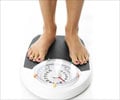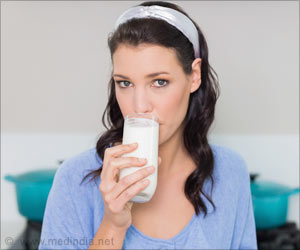Menopause is a natural event when a woman stops menstruating and there is a gradual reduction in the production of estrogen and progesterone by her ovaries. This decline of the female sex hormones causes hot flashes, mood swings and night sweats.
Metabolic syndrome (MetS) is a cluster of conditions, which occur together such as high blood pressure, elevated blood sugar level, abdominal obesity and elevated cholesterol levels, which increases your risk of heart disease, stroke and diabetes.It is hypothesized that milk consumption could have significant beneficial effects on the cardiometabolic factors associated with MetS, based on data from several prospective cohort studies which have shown that dairy and milk consumption was associated with a lower prevalence of MetS.
A study was conducted to investigate the effect of consumption of milk in postmenopausal women with abdominal obesity, who suffered from MetS. The results of the study were published in Nutrition Journal. In this study, cardiometabolic risk factors, which are associated with MetS such as glucose homeostasis, blood lipids, cholesterol homeostasis, blood pressure etc., were evaluated.
Twenty-seven overweight postmenopausal women participated in the randomized crossover design study. They consumed two diets based on the National Cholesterol Education Program (NCEP) for a period of six weeks. The first one was the “MILK” diet, in which 20% of daily calories came from partly skimmed milk (2% fat milk), corresponding to 3.2 servings of milk per 2000 kcal. The second one was a “milk-free” diet i.e., without milk or other dairy was based on “NCEP” control diet.
The macronutrient composition of both diets was comparable (55% carbohydrates, 15% proteins, 30% fat and 10% saturated fat). Participants were asked to eat all the food and only the food that was provided to them. They were instructed to report all the food items eaten on a daily reminder sheet and report any deviations from the diet. The scientists reported greater than 98% of compliance by the participants to the diet.
At the end of six weeks of study, it was seen that the “MILK” diet significantly reduced plasma HDL-C levels but had no impact on plasma total and LDL-C levels so that the total/HDL-C ratio was increased significantly compared with baseline values. It was observed that both the “MILK” diet and “NCEP” diet had no effect on plasma CRP, however both treatments reduced plasma adiponectin in a similar way. Plasma endothelin concentrations were reported to be decreased significantly and similarly during both treatments.
It was observed that the “MILK” diet reduced blood pressure, however the changes were comparable to those seen with the “NCEP” diet. “MILK” diet was also reported to be associated with lower VLDL apolipoprotein B fractional catabolic rate and plasma sterol concentrations as compared to the control “NCEP” diet.
Further studies are warranted to conclusively prove as to why milk or dairy consumption in epidemiological studies is generally associated with reduced risk of MetS, CHD as well as type 2 diabetes.













